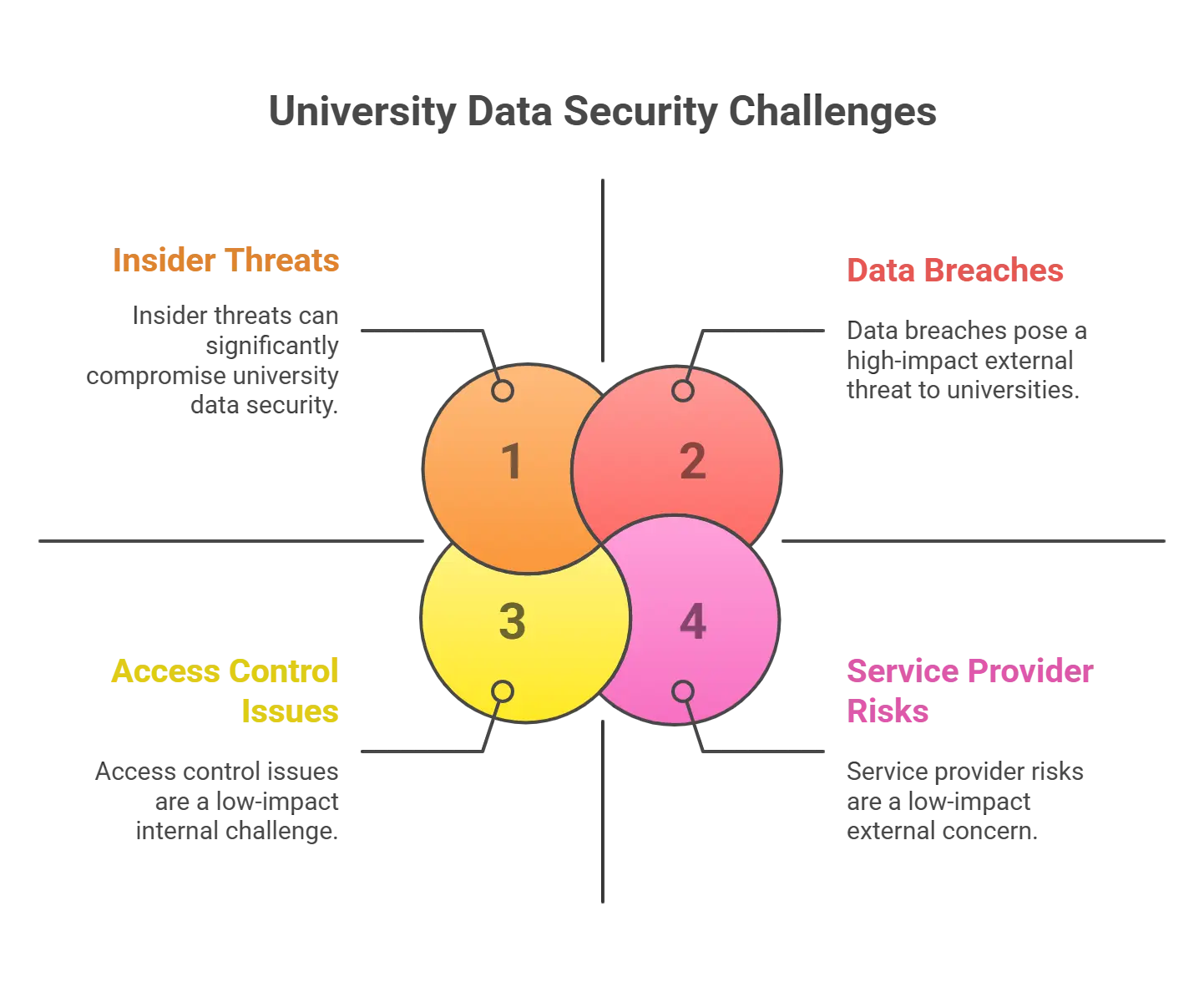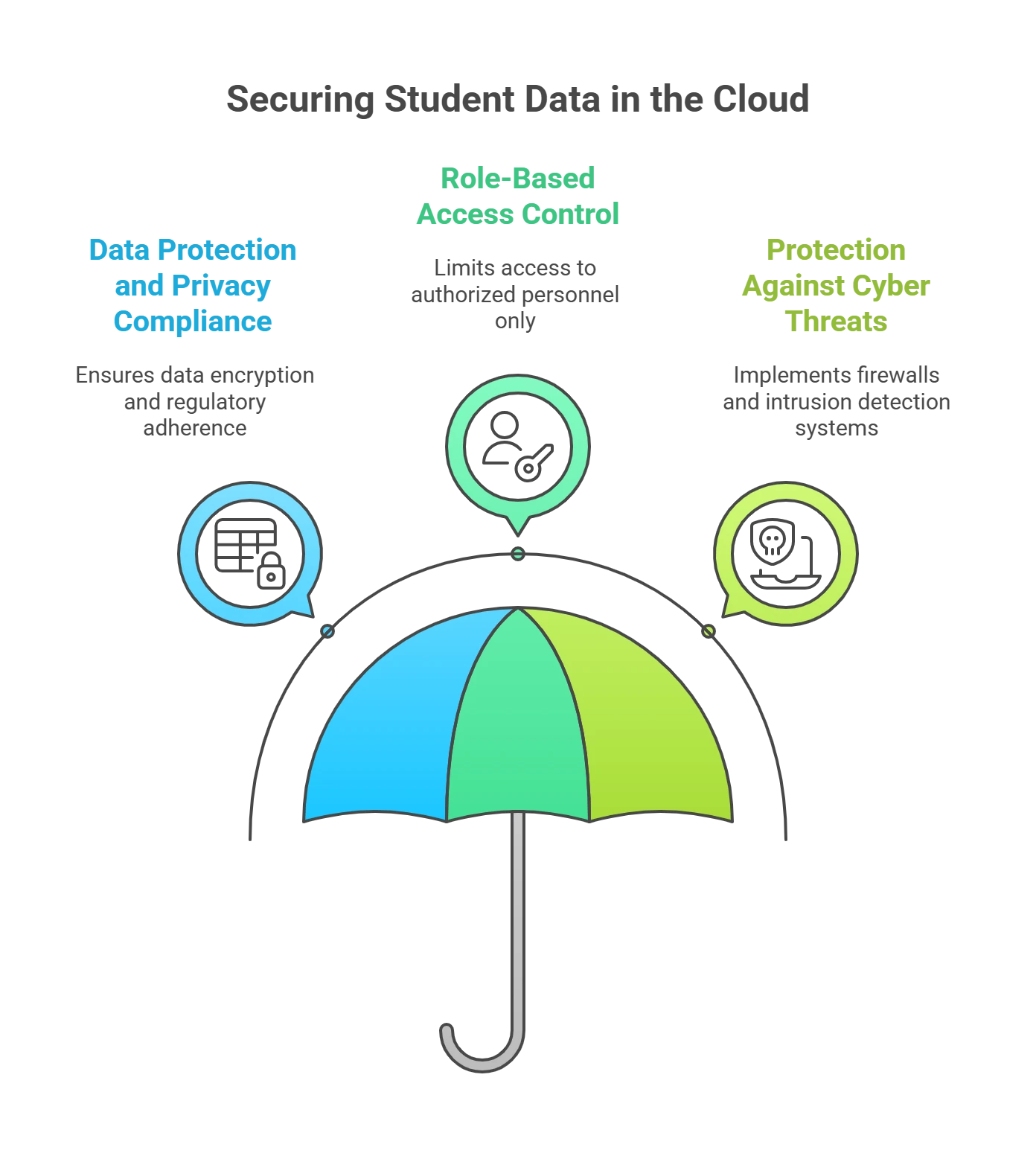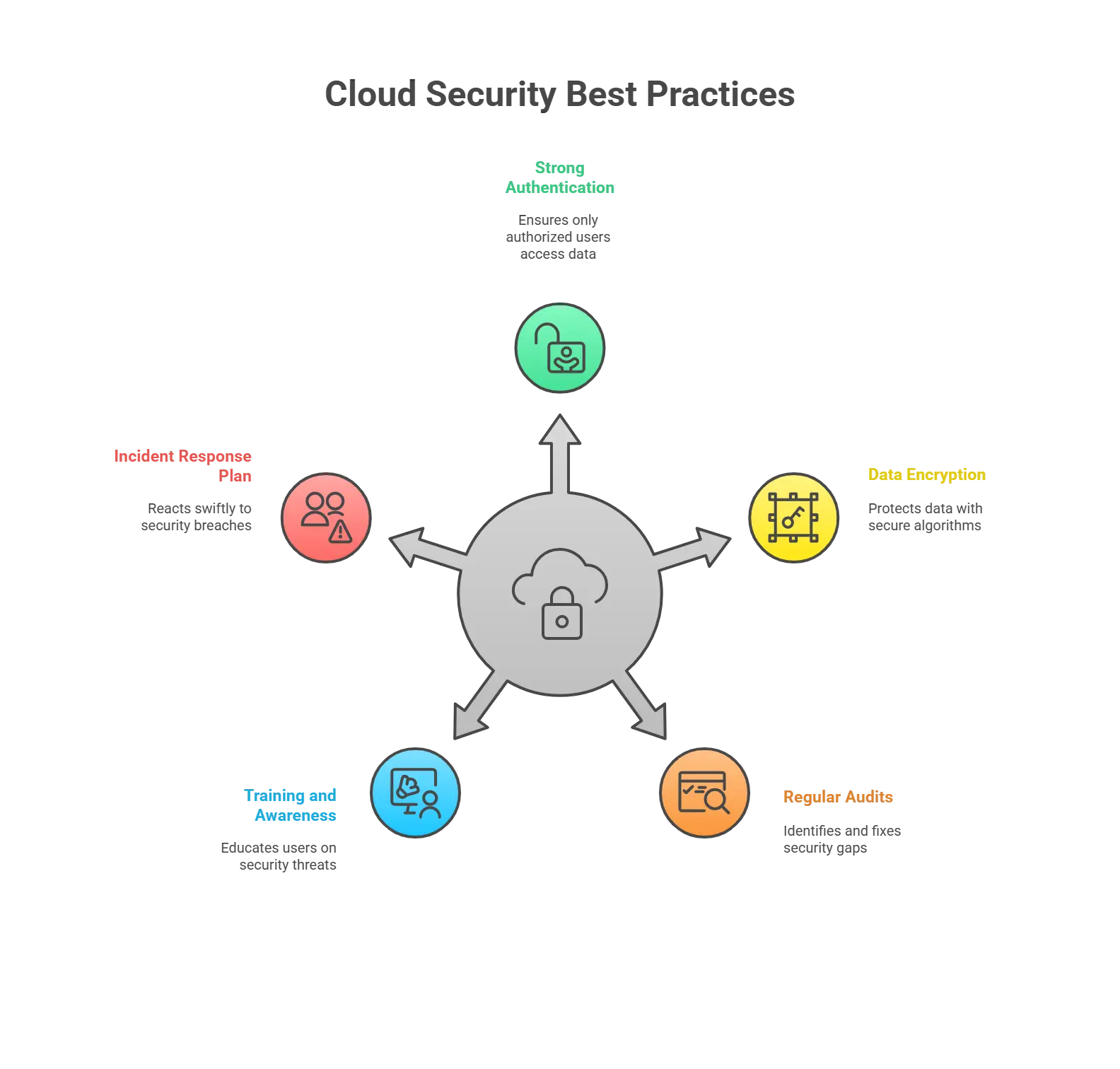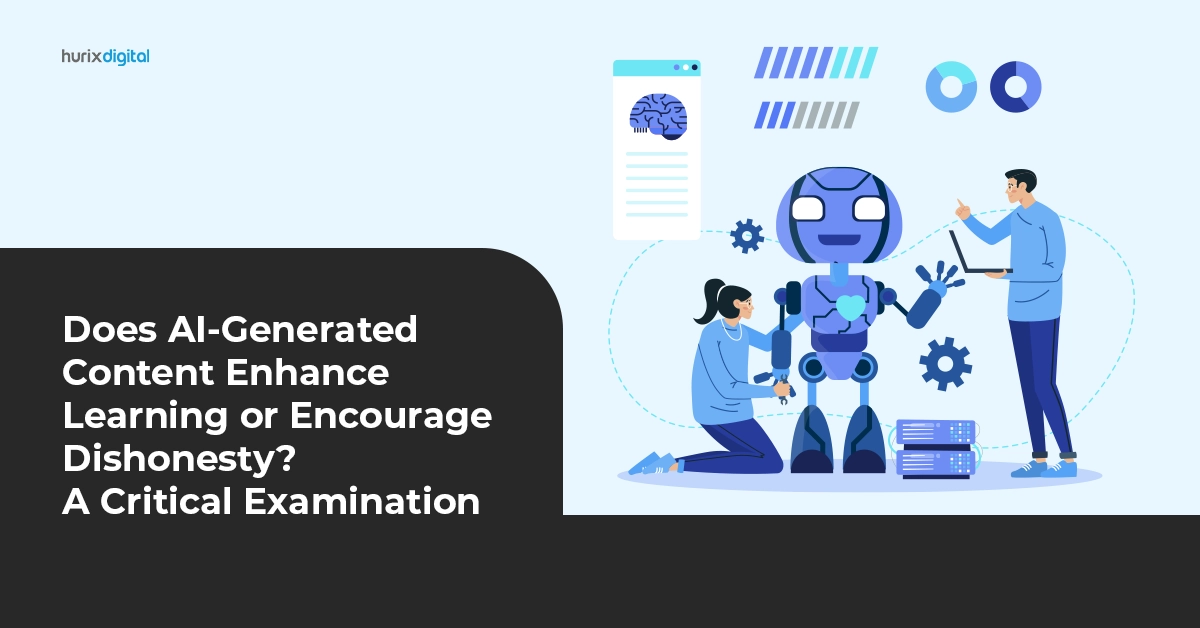
Modernizing University Operations with Cloud Technology, Made Simple!
Summarize with:
Changes in registration are the modern uproar of the year. According to Gartner analysts, by 2025, more than 85% of organizations will embrace the cloud-first principle. Indeed, the wave of change in such management comes from using cloud-based solutions that provide institutions with heightened security, efficiency, and flexibility.
By deploying secure cloud technology, institutions could centralize all operations and manage their data more efficiently, thus seamlessly integrating them within departments. Such systems enable universities to move toward smoothing the education institute process, decreasing administrative burdens, and making students’ lives easier.
This blog will analyze the benefits of using secure cloud technology to manage educational institutions and why they should switch to it.
Table of Contents:
- Relevance of Cloud-Based Solutions for University Registrars
- Challenges in Securing the Sensitive Data of Universities
- Enhancing Security with Cloud-Based Solutions
- Best Practices for Securing Data Management and Administrative Services Using Cloud-Based Solutions
- Benefits of Cloud Solutions to Students and Faculty
- Speeds Up Academic Research
- Accessibility of Educational Resources
- Empower Virtual Learning
- Job Market Skill-Equipped Students
- Disaster Recovery and Backup
- Faster Implementation of Innovations in Data Security
- Automated Enrollment Management
- Mobile Friendly User Interfaces
- Customizable Reports and Dashboards
- Scheduling and Course Management
- Future Trends in Cloud-Based College Registration
- Wrapping Up
Relevance of Cloud-Based Solutions for University Registrars
The global Cloud Computing market in higher education is predicted to reach $8,779.1 million by 2027. Furthermore, according to research in 2024 by the Wasabi Global Cloud Storage Index, 95% of educational institutions will increase the data stored in the public cloud.
Such systems are gaining popularity as they lower the cost of operations and thus make it possible for universities to scale up, as the number of students increases.
Cloud solutions allow universities to update their tech stack, streamline administrative workflows, and reduce long-term costs. The challenge any university faces is the security of sensitive data, such as student records and research, from cybersecurity threats.
University registrars must protect against data breaches and insider threats and ensure compliance with privacy regulations. Cloud-managed services accelerate modernization in higher education.
Challenges in Securing the Sensitive Data of Universities
Here are some key challenges that university registrars and heads of educational infrastructure services face:

1. Data Privacy
Colleges and universities are supposed to manage a large volume of sensitive data, including student records, employee data, and research-related information.
Institutions need to implement effective security practices that ensure the privacy and confidentiality of student and staff information. Hence, universities should constantly monitor compliance.
2. Data Breaches
Data breaches remain one of the significant threats to universities due to the increased sophistication of cybercriminals.
Cloud systems should be maintained with regular security updates, information encryption, and intrusion detection.
3. Insider Threats
While external threats are important, insider threats can also pose a problem in data security. These might come internally from students, faculty, or staff who may try to compromise sensitive information.
Universities must ensure tight access control and that users are given only the access necessary to perform their functions.
4. Service Provider Risks
Most universities store data using a third-party cloud service. They should stringently screen selected providers to ensure security is one of the best options.
Enhancing Security with Cloud-Based Solutions
Student data is the highest priority in the college security system. Colleges can prevent data breaches, unauthorized access, and other cyber and cloud-based threats with advanced security measures.

1. Data Protection and Privacy Compliance
Cloud-based course registration systems have been designed with robust protocols for data encryption at the forefront, so sensitive student information is secure.
Moreover, they are designed in line with strict regulations such as FERPA and GDPR. This ensures that institutions can fulfill their legal obligations while upholding the highest standards possible regarding data privacy.
2. Role-Based Access and Control Mechanisms
Not all users need access to all the information. Cloud systems allow colleges to impose role-based access controls, whereby only people with authority can access sensitive information. This helps reduce the chances of internal data breaches and further secures the systems.
3. Protection Against Cyber Threats
Due to the high volume of personal data they maintain, colleges and universities are prime targets for cyberattacks.
Secure cloud-based solutions include built-in cybersecurity capabilities like firewalls, intrusion detection systems, and routine security updates that help the institution act against threats at the right time with minimum time lapse. These features help protect the integrity and confidentiality of student data.
Best Practices for Securing Data Management and Administrative Services Using Cloud-Based Solutions
The following are best practices related to cloud-based solutions that universities can follow:

1. Strong Authentication and Access Controls
Strong mechanisms can be used to authenticate users at different levels. A proper login mechanism also provides security and restricts unauthorized access to confidential data.
Access should also be role-based, and permissions should be provided using fine-grained access control, which restricts the user’s view and access to data according to an individual task.
2. Data Encryption
Data encryption should use strong algorithms and secure encryption keys. These keys ensure that only authorized parties can access the information, providing an additional layer of security.
3. Regular Security Audits
It is very important to conduct periodic security audits on cloud infrastructure services. These audits should target the university’s internal systems as well as its external infrastructure. Regular assessment allows an institution to fix potential security gaps before they can be misused.
4. Training and Awareness
It becomes important to protect the sensitive data of higher educational institutions by educating employees and students on security practices. Some of the areas where training programs should focus include recognizing phishing attempts, establishing strong passwords, and reporting suspicious activities.
5. Incident Response Plan
A well-defined incident response plan ensures that the reaction scope is addressed with speed and efficiency upon the occurrence of a security breach. For such planning, practice, and updating should be done routinely to prepare the university for all sorts of threats.
Benefits of Cloud Solutions to Students and Faculty
Considering the global applicability of technology, cloud-based solutions have become pivotal for universities. Here are some ways in which cloud solutions can benefit all stakeholders:

1. Speeds Up Academic Research
Due to the cloud, researchers can effectively analyze large volumes of data and perform heavy-duty calculations. This decreases data processing times and identifies additional time for conducting the research, therefore accelerating innovation.
Cloud data management and storage capacity promote collaboration, as research teams can easily share their information with their peers around the world.
2. Accessibility of Educational Resources
Cloud-based solutions make digital resources much more accessible to students and faculty, making teaching and learning easier. With everything online, less reliance on physical materials would reduce paper waste and ultimately save money.
3. Empower Virtual Learning
Cloud solutions give institutions the ability to offer courses remotely and on demand. Cloud-managed services and platforms are fully online instructional, allowing students flexibility in studying at their convenience, whether it is due to balancing work, personal responsibilities, or geographical limitations.
This flexibility is essential for institutions that want to meet the ever-increasing demand for online and hybrid learning. Cloud solutions enable educational institutions to keep the curriculum materials updated. Further, integrating learning environments in the cloud allows students to practice with real state-of-the-art tools and technology.
4. Job Market Skill-Equipped Students
Most organizations have growing skill gaps in areas like cloud computing and cybersecurity. Cloud-based solutions used in universities offer students opportunities by teaching them in-demand skills that are valuable in the job market.
5. Disaster Recovery and Backup
Cloud solutions boast excellent disaster recovery and backup against system failures or data loss. Institutions can depend on automatic backups and redundant cloud infrastructures to rapidly restore their data and, hence, ensure minimal downtime. This ability is critical in sustaining uninterruptible operations and securing sensitive information.
6. Faster Implementation of Innovations in Data Security
Universities benefit from frequent updates and new feature releases. Cloud service vendors also very frequently put out updates with enhanced security, better performance, and new features. Here are some of the key data management security systems that universities can implement:
- Utilize multi-factor authentication along with role-based access controls so that sensitive data is accessible to only authorized users.
- Data must be encrypted both at rest and in transit using robust encryption algorithms.
- Follow best practices to recognize phishing attacks, use passwords safely, and report suspicious activities.
7. Automated Enrollment Management
Cloud-based solutions help with enrollment management. Students can easily enroll in courses, manage their class schedules, and edit information in their profiles. Additionally, automation reduces the administrative burden and significantly reduces manual errors.
8. Mobile Friendly User Interfaces
Many of the cloud solutions have been planned for mobile access so that even on the go, the user can access the platform. The intuitive interface further reduces the learning curve and enhances data usage for students and staff.
9. Customizable Reports and Dashboards
Administrators and university registrars can generate customized reports with visual dashboards to track enrollment trends, retention rates, and academic performance. These reports further assist data-driven decisions.
10. Scheduling and Course Management
Cloud solutions ease the process of creating course schedules, classroom assignments, infrastructure services, and space utilization. Such a platform allows institutions to manage faculty workloads and streamline the process of creating course modules.
Cloud-based registrar solutions can be integrated with existing learning management systems (LMSs), which allows information to be exchanged between academics and administration.
Future Trends in Cloud-Based College Registration
With technology still emerging, several trends might reshape the future of the college registration processes.

1. Artificial Intelligence in Student Onboarding
AI has started to play an even more active role in college enrollment. Automated systems have begun helping students choose courses, provide personalized advising, and predict which students will fare better based on past data.
AI-powered technologies personalize registration processes, making them more intuitive and faster for students.
2. Personalized Registration Processes
Cloud-based registration systems will meet this trend through personal workflow options. This could mean suggesting courses a student might want based on prior academic work or creating a customized payment plan.
Institutions will be able to provide an even more engaging and personalized experience to students with unique needs.
3. Mobile-First Registrations
With the rise of mobile devices, students expect to be able to manage everything from course selection to payment on their smartphones.
Cloud-based systems are increasingly optimized for mobile platforms, allowing students to complete their registration using their mobile devices anywhere and at any time.
Wrapping Up
Cloud-based solutions are changing how institutes manage their registration processes, increasing their efficiency and accessibility while enhancing data security. This may be seen as one way higher education will change further in the following years.
We at Hurix Digital offer customized cloud-based solutions that simplify and secure your college registration system. Would you like to learn more?
Contact us today to learn how we can simplify your institution’s registration processes and enhance student engagement.
Summarize with:

Vice President and Strategic Business Unit Head – Cloud Services
A top technology management voice on LinkedIn with 20 Years of experience in Information Technology, Cloud Services, Digital Transformation, Application Modernization, Managed Services, IT Security Engineering and Operations Management. An avid technology Leader, Leadership Speaker, Author & Coach.
 A Space for Thoughtful
A Space for Thoughtful 




